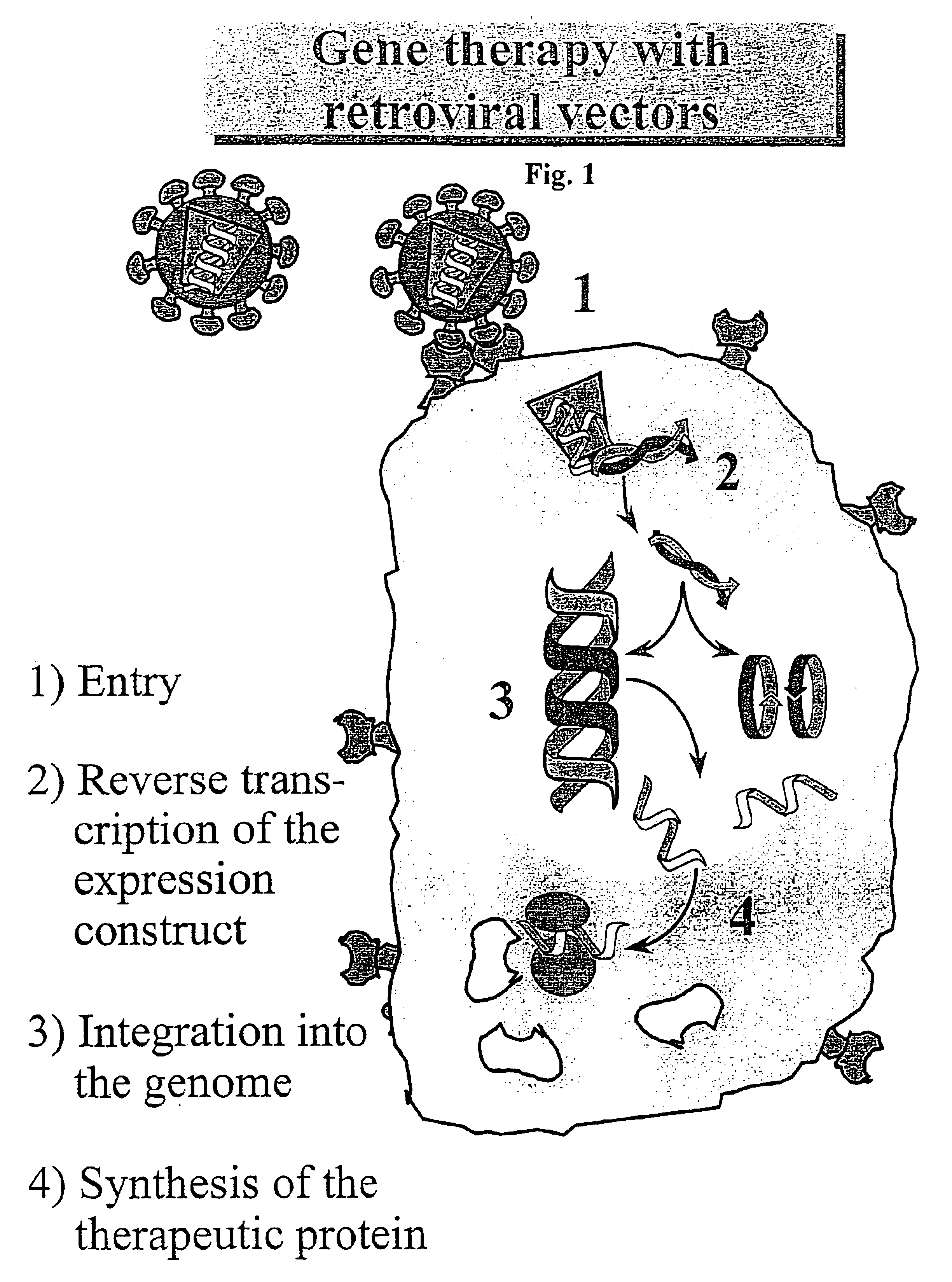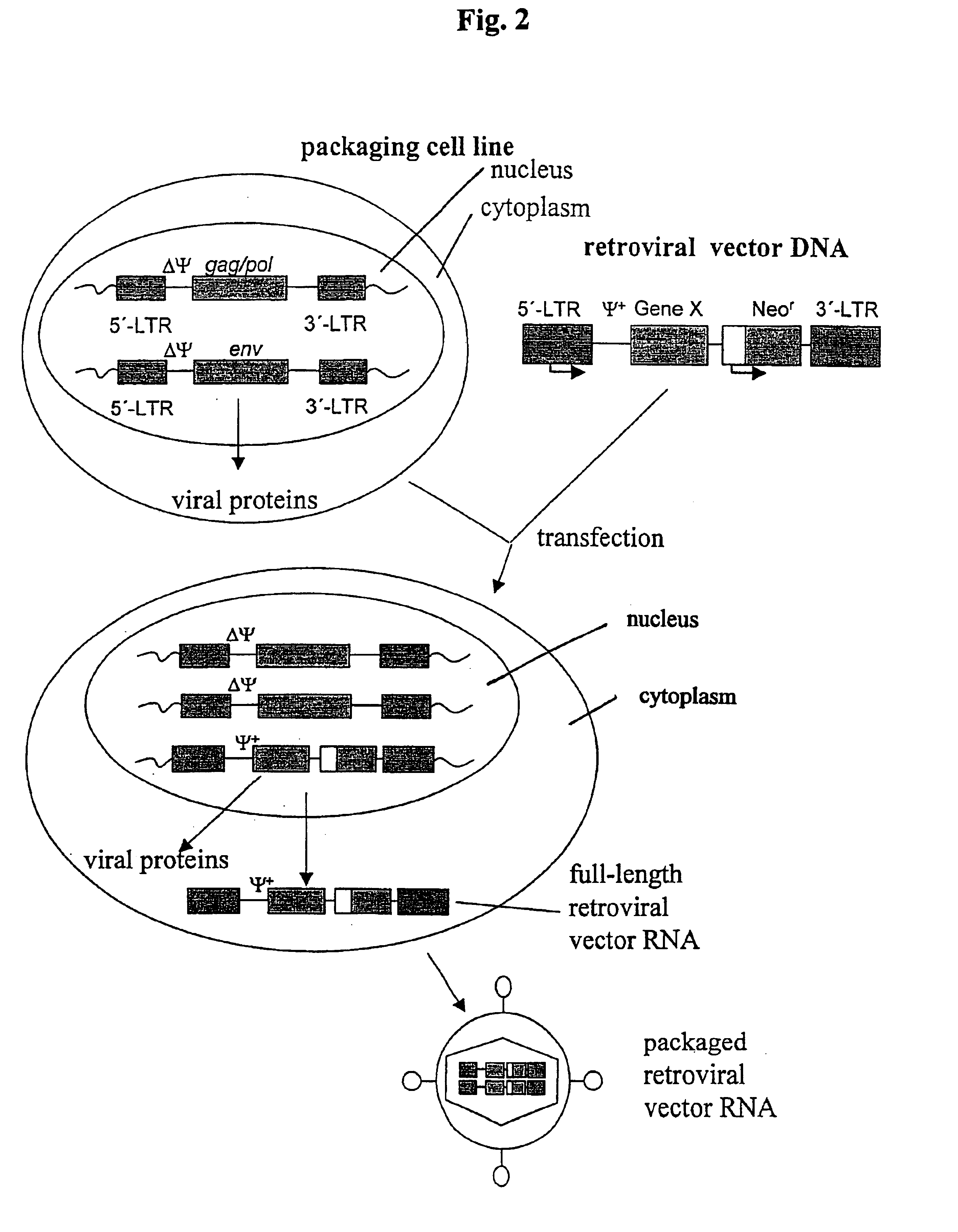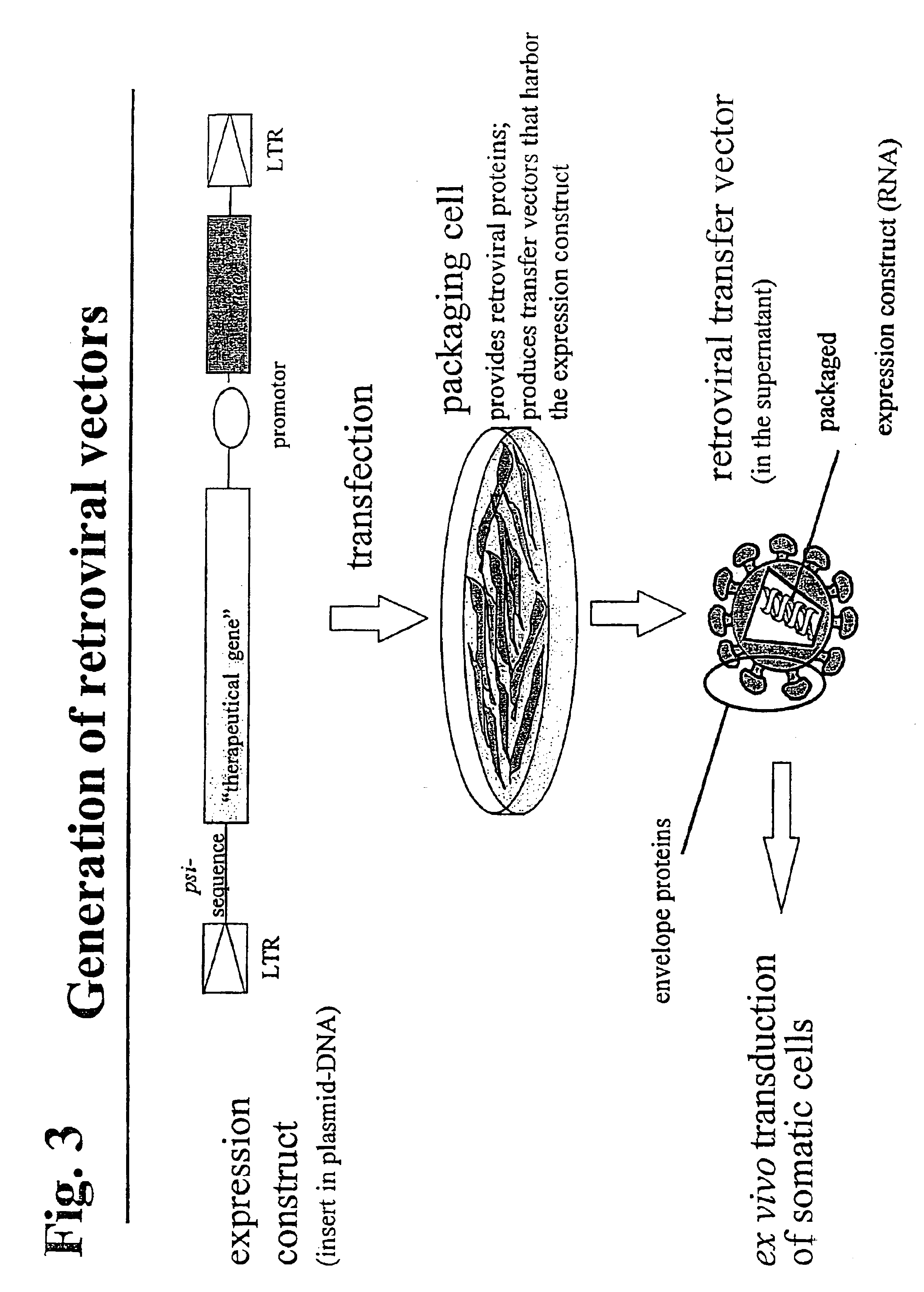Retroviral vectors, methods for their preparation and their use for gene transfer into CD4-positive cells
a technology of cd4-positive cells and retroviral vectors, which is applied in the field of retroviral vectors (cell targeting vectors), can solve the problems of failure to prepare retroviral vectors containing the env genes of i>lentiviruses /i>hiv-1, hiv-2 or simian immunodeficiency virus (siv) which cannot be used in the preparation of amphotropic retroviral vectors
- Summary
- Abstract
- Description
- Claims
- Application Information
AI Technical Summary
Benefits of technology
Problems solved by technology
Method used
Image
Examples
example 1
1. Example 1
Preparation of MLV(HIV-1) Vectors
1.1 Cell Lines and Plasmids
[0040]All plasmids used were prepared from transformed E. coli strains DH10αor HB101. The molecular cloning of the expression constructs pLβAc / env-neo is described by Kräuslich et al., Virology 192 (1993), 605-617 and pLssAc / env-Tr712-neo is described by Kräuslich et al., Virology 192 (1993), 605-617 and Wilk et al., Virology 189 (1992), 167-177. These expression constructs encode the env gene variants of HIV-1 and the neomycin-resistance gene. The expression construct pCRUCA comprising the env gene of amphotropic MLV is described by Wilk et al., Virology 189 (1992), 167-177 and Battini et al., J. Virol. 66 (1992), 1468-1475. The TELCeB6 packaging cell line expressing the expression construct pMFG-nlslacZ and the genes gag and pol of MLV is described by Cosset et al., J. Virol. 69 (1995), 7430-7436. The cell line HeLaCD4+ was provided by the MRC AIDS reagents depository and 293 cells were purchased from ATCC (AT...
example 2
Preparation of MLV(SIVagm3) Vectors
2.1 Cloning of the SIVagm3 Env-Expression Constructs
[0046]The plasmid pRep 4 (Invitrogen, Leek, Netherlands) was used to clone the env gene variants of SIVagm3. To generate the env gene variants the sequence between base 5713 and 8411 of SIVagm3 was amplified from the plasmid pMB2 (Baier et al., J. Virol. 63 (1989), 5119-5123) by recombinant PCR (rPCR) using the oligonucleotids Nhe AGM ENV+ (SEQ ID NO: 1) and Xho AGM ENV− (SEQ ID NO:2), and inserted into the plasmid pRep4 via the restriction sites Nhe I and Xho I. The cDNA generated by rPCR encompasses both rev-exons and the complete reading frame of the env gene. The resulting plasmid termed pRep wt env was used as a template for further rPCRs and as a vector for further cloning steps.
[0047]Next, the truncated env gene variants Δ0env, Δ7env and Δ16 env were cloned. For this purpose, the respective oligo-nucleotides Not STOP 0− / + (0+: SEQ ID NO:3, 0+−:SEQ ID NO:4), Not STOP 7− / + (7−: SEQ ID NO:5, 7...
example 3
3.1 Establishment of Stably Transfected Packaging Cell Clones
[0065]To prepare high-titer vector stocks TELCeB6 cells were stably transfected with the respective env-constructs and subsequently subjected to selection. The media used for selection correspond to the media used for the cultivation, but included additionally the neomycin analogoue G418 (800 μg / ml) for selection of neo+-cells (HIV-1 env-constructs) or hygromycine B (200 μg / ml) for the selection of hyg+-cells (SIVagm env-constructs). The antibiotics were purchased from Sigma (Deisenhofen, Germany). The selection of transferred cells was started two days post transfection and carried out for further 10 days until cell clones formed colonies. The clonal cells were detached and resuspended from the tissue culture plate using an “Eppendorf-pipette”. These single cell clones were first expanded in 24-well tissue culture dishes and tested for the generation of vectors by titration in suitable target cells.
3.2 Generation of Pseud...
PUM
| Property | Measurement | Unit |
|---|---|---|
| Length | aaaaa | aaaaa |
Abstract
Description
Claims
Application Information
 Login to View More
Login to View More - R&D
- Intellectual Property
- Life Sciences
- Materials
- Tech Scout
- Unparalleled Data Quality
- Higher Quality Content
- 60% Fewer Hallucinations
Browse by: Latest US Patents, China's latest patents, Technical Efficacy Thesaurus, Application Domain, Technology Topic, Popular Technical Reports.
© 2025 PatSnap. All rights reserved.Legal|Privacy policy|Modern Slavery Act Transparency Statement|Sitemap|About US| Contact US: help@patsnap.com



